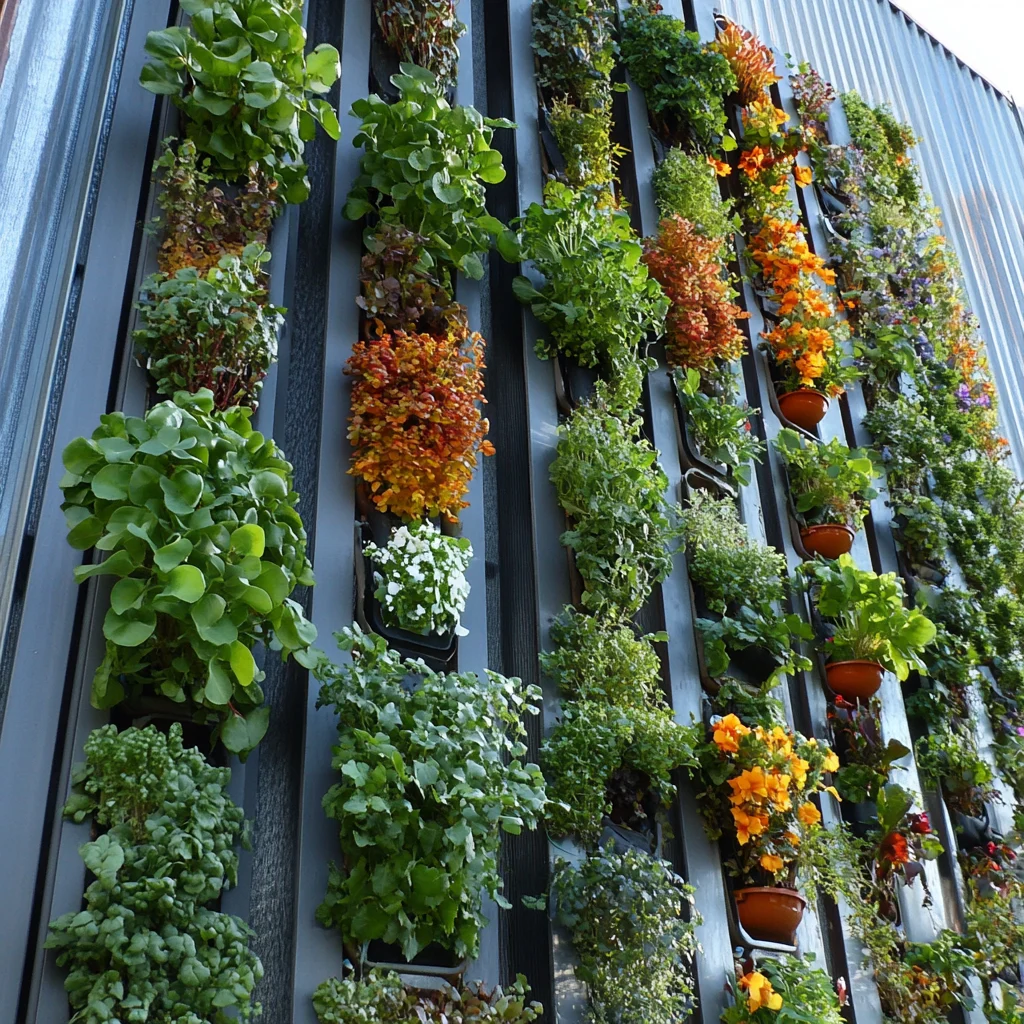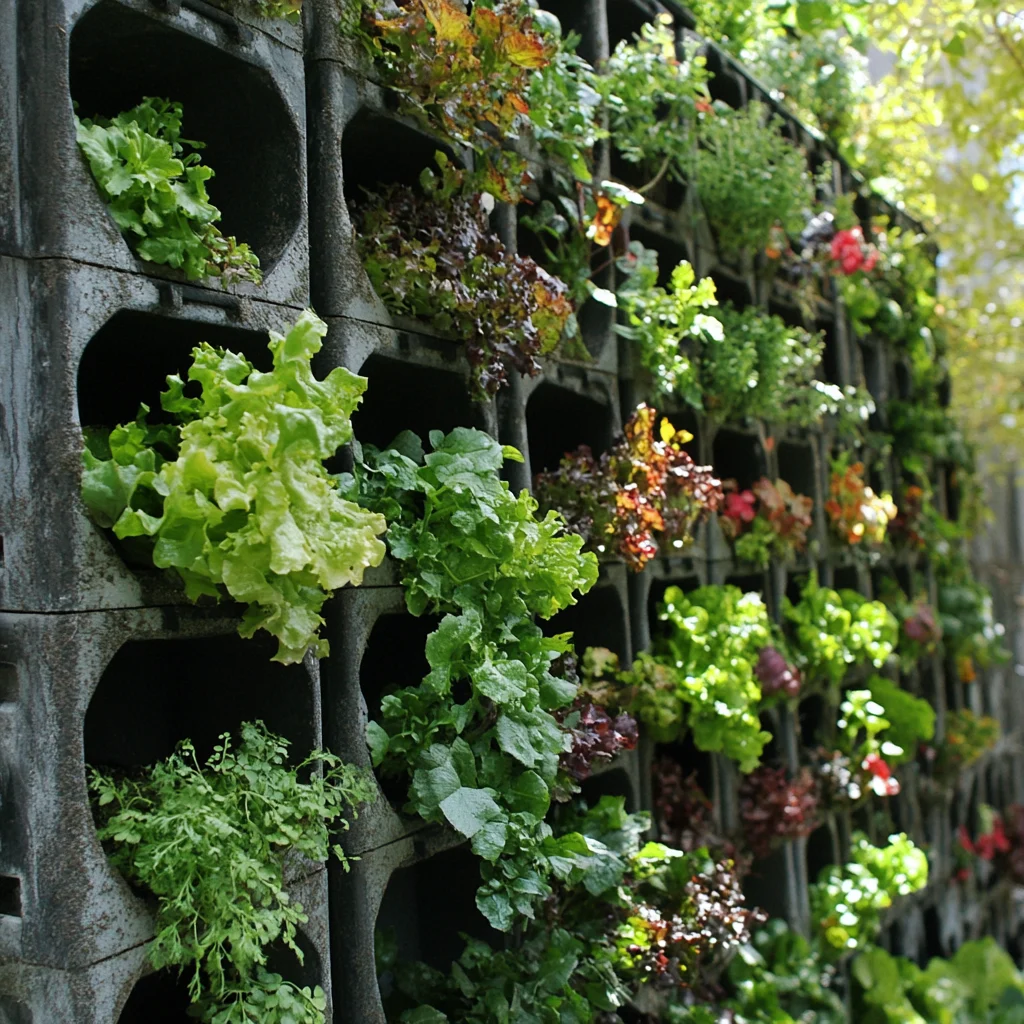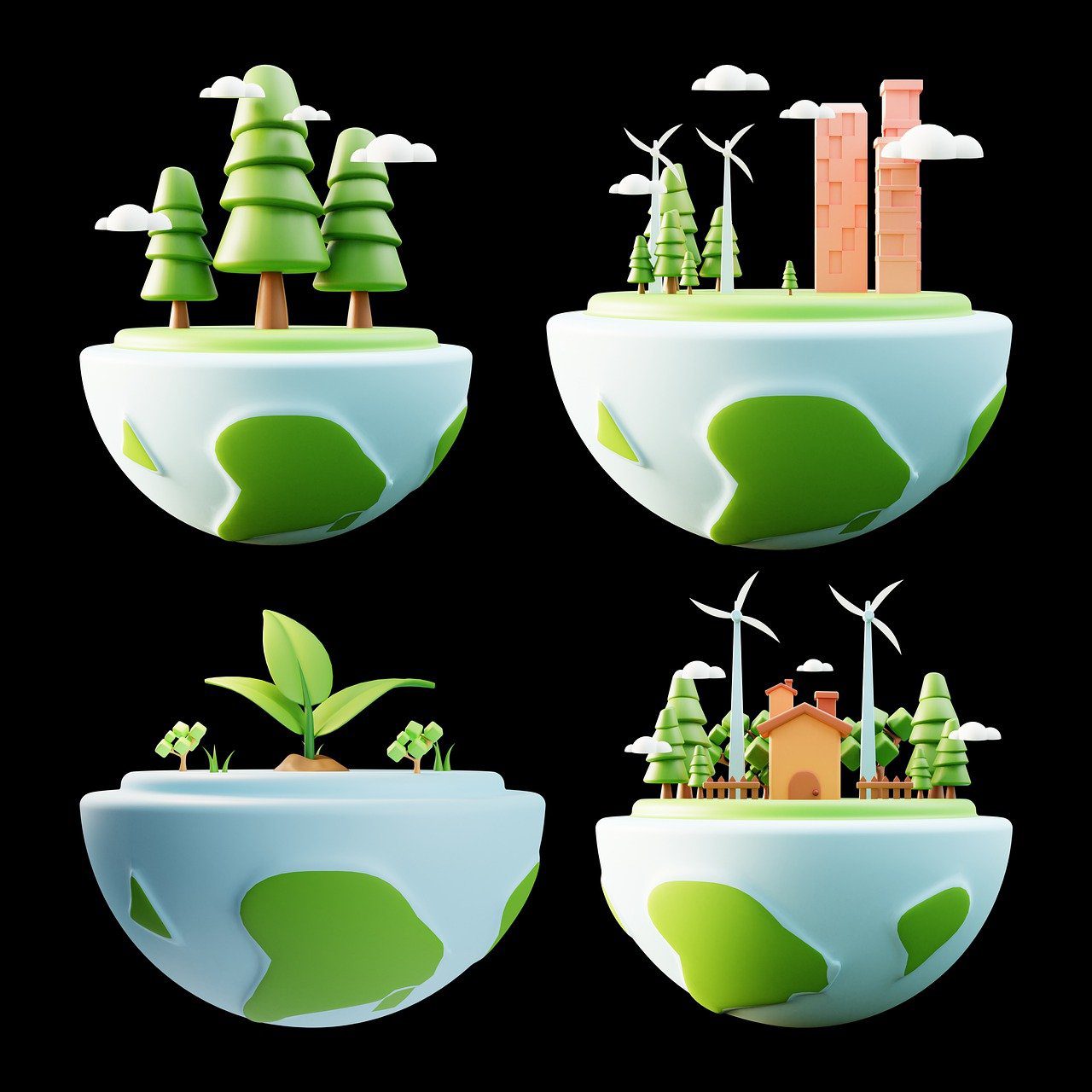Urban gardening is transforming the way city dwellers connect with nature, food, and sustainability. Whether you have a balcony, rooftop, windowsill, or even just a sunny corner, you can grow your own herbs, veggies, or decorative plants—even in the tightest of spaces.
This article shares urban gardening ideas that are creative, low-cost, and accessible—perfect for hobbyists, sustainability advocates, and side hustlers alike.
Why Urban Gardening Matters
Urban gardening isn’t just a fun pastime—it has real-world benefits:
- Saves money on groceries and herbs
- Improves mental well-being and reduces stress
- Enhances food security in dense urban areas
- Promotes sustainability by reducing transport-related food waste
- Can generate income through farmer’s markets, plant sales, or workshops
Let’s explore creative ways to get started, regardless of your space or budget.
1. Vertical Gardening
Vertical gardening is ideal for tight spaces. It maximizes space by growing plants upward instead of outward.
Ideas to Try:
- Wall-mounted planters or pegboard plant holders
- Hanging baskets on fences or balcony rails
- Trellises for climbing plants like tomatoes, peas, or beans
- Shoe organizers turned into herb gardens
- Stackable planters or vertical hydroponic towers
Best for: Herbs, leafy greens, strawberries, and vining vegetables.
2. Balcony or Terrace Gardening
If you have a balcony or terrace, even a small one, you can create a thriving container garden.
Tips:
- Use lightweight pots to reduce pressure on structures
- Group plants by sun and water needs
- Add foldable or hanging tables for workspace
- Install railing planters to free up floor space
- Try dwarf or compact plant varieties
Good picks: Cherry tomatoes, chilies, lettuce, radishes, mint, basil.
3. Indoor Container Gardening
No outdoor space? No problem. With the right setup, your kitchen or living room can become a green sanctuary.
Essentials:
- Bright, sunny windows or grow lights
- Pots with good drainage
- Organic potting mix
- Self-watering containers or trays for low-maintenance care
Popular indoor plants: Microgreens, herbs (parsley, oregano, chives), succulents, snake plants, aloe vera.
4. Hydroponics at Home
Hydroponics is a soil-free method that lets plants grow faster and use less water—a modern solution for urban growers.
Beginner Options:
- Mason jar hydroponics for herbs
- Countertop hydroponic kits (e.g., AeroGarden)
- DIY bucket or tub systems with a water pump
Ideal crops: Leafy greens, herbs, lettuce, spinach, basil.
5. Window Box Gardening
Window boxes are perfect for city apartments with window ledges or fire escapes (check local codes first).
Setup Ideas:
- Use shallow but wide containers
- Ensure sturdy brackets and drainage holes
- Plant in layers (tall plants in back, trailing ones in front)
Perfect for: Flowers, compact veggies, small peppers, thyme, rosemary.
6. Rooftop Gardening
For those with rooftop access, a small rooftop garden can become your own urban oasis.
Considerations:
- Weight load (check with building management)
- Wind barriers and sun exposure
- Raised beds, large containers, or modular grow bags
- Water access and irrigation setup
Great for: Tomatoes, peppers, cucumbers, eggplants, and pollinator-friendly flowers.
7. Upcycled Gardening Projects
Urban gardening doesn’t have to be expensive. Use repurposed materials to create eco-friendly planters and systems.
Creative Ideas:
- Reuse plastic bottles as wall planters
- Pallets turned into vertical garden walls
- Tin cans or old mugs as herb pots
- Wooden crates as raised beds
- Old tires as colorful planters
Best for: Budget gardeners and DIY fans.
8. Community Gardening
If you have zero space at home, look into local community gardens. Many cities have programs that offer:
- Shared gardening plots
- Composting resources
- Water access and gardening tools
- Networking with fellow gardeners
Benefits: Collaboration, education, and access to more land.
9. Microgreens Farming
Microgreens are tiny edible plants harvested early, usually within 7–14 days, and packed with nutrients.
Why it’s great:
- Can be grown indoors year-round
- Grows fast and takes little space
- Potential side hustle for selling to restaurants or markets
Top choices: Sunflower, radish, arugula, kale, mustard.
10. Herb Gardens for Kitchens
Every urban home can have a kitchen herb garden. It’s simple, smells great, and saves trips to the store.
Easy Setup:
- Small containers or mason jars
- Sunny windowsill or grow light
- Regular trimming to promote growth
Popular picks: Basil, cilantro, parsley, dill, thyme, oregano.
Urban gardening proves that you don’t need acres of land to grow fresh food or enjoy the benefits of greenery. Whether you’re a hobbyist, side hustler, or eco-conscious city dweller, there’s an idea that fits your space and lifestyle.
By starting small, being creative, and using available resources, your urban garden can flourish—and even inspire others in your community.

FAQ: Urban Gardening Ideas
1. What is urban gardening?
Urban gardening is the practice of growing plants—such as vegetables, herbs, and flowers—in city or suburban environments where space is limited. It often involves creative use of balconies, rooftops, windowsills, and other small areas.
2. Can I start urban gardening if I live in an apartment?
Yes! Even if you don’t have outdoor space, you can grow herbs, microgreens, and small vegetables indoors using containers, window boxes, or hydroponic systems. All you need is a sunny window or grow lights.
3. What are the best plants for small urban spaces?
Some of the easiest and most space-efficient plants include:
- Herbs: basil, mint, parsley, thyme
- Leafy greens: lettuce, spinach, arugula
- Small veggies: cherry tomatoes, radishes, chilies
- Microgreens: sunflower, radish, mustard
- Compact flowers or pollinator-friendly plants
4. What is vertical gardening and how does it work?
Vertical gardening is a method of growing plants upward using walls, trellises, hanging containers, or vertical planters. It’s ideal for maximizing space and works well for climbing plants or compact varieties.
5. What kind of containers should I use for urban gardening?
You can use a variety of containers, including:
- Traditional pots or planters
- Window boxes or railing baskets
- Hanging planters or wall-mounted pots
- DIY options like buckets, crates, or repurposed jars
Make sure containers have drainage holes and are appropriate for the size of your plants.
6. Is it expensive to start an urban garden?
Not necessarily. Many urban gardening setups can be done on a low budget by:
- Using recycled or upcycled containers
- Starting from seeds instead of buying mature plants
- DIY vertical setups from pallets or old shelves
- Joining community gardens for access to shared tools and soil
7. How much sunlight do I need for urban gardening?
Most edible plants need at least 4–6 hours of sunlight daily. South-facing windows, balconies, or rooftops are ideal. If natural light is limited, consider using LED grow lights to supplement.
8. What is hydroponic gardening and is it suitable for apartments?
Hydroponic gardening involves growing plants in water without soil, using nutrient solutions. It’s a great option for indoor urban spaces because it’s compact, clean, and often more efficient than traditional methods.
9. How can I garden on a rooftop safely?
If you have rooftop access, ensure:
- The structure can support the weight of containers and soil
- There is adequate wind protection
- You have access to water for irrigation
- You follow building codes or property rules
Raised beds, planters, and grow bags are great options for rooftops.
10. Can urban gardening be turned into a business or side hustle?
Yes! Many urban gardeners sell:
- Microgreens to local restaurants
- Potted herbs or flowers at markets
- Homegrown produce within their communities
- Gardening workshops, kits, or content online
With some creativity and consistency, urban gardening can grow beyond a hobby.
Subscribe to our Newsletter for Posts, Updates and More.









Leave a Reply